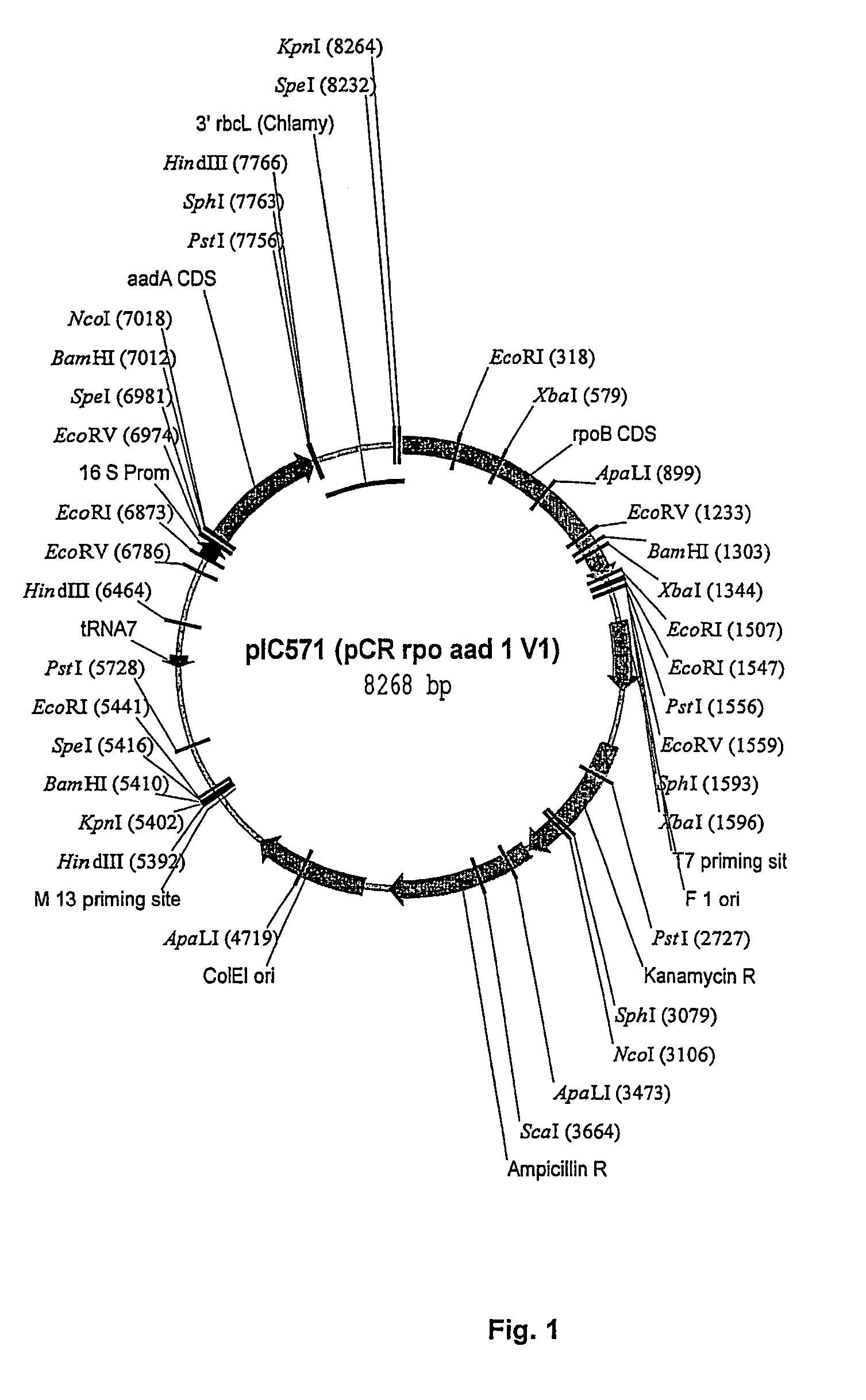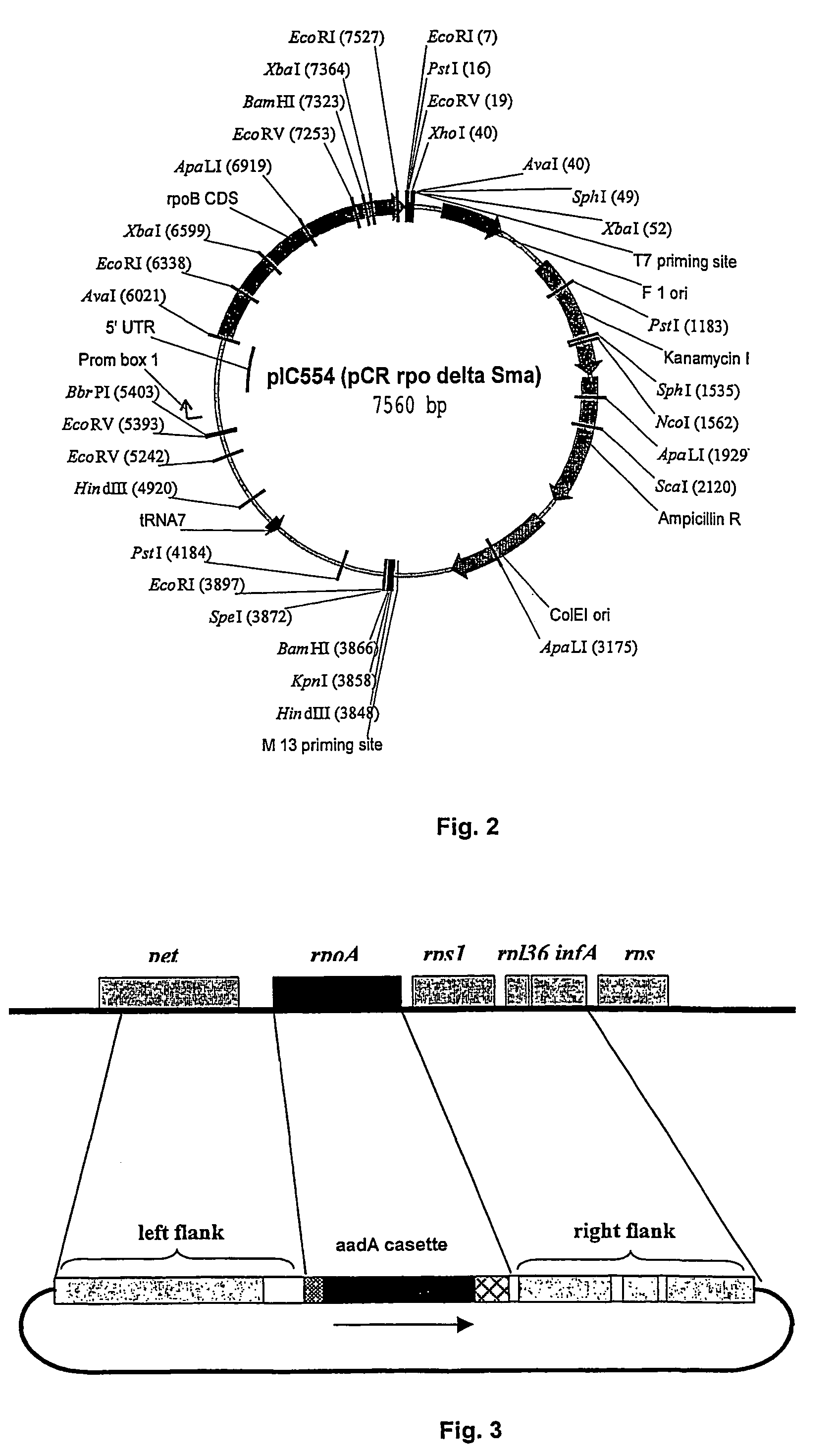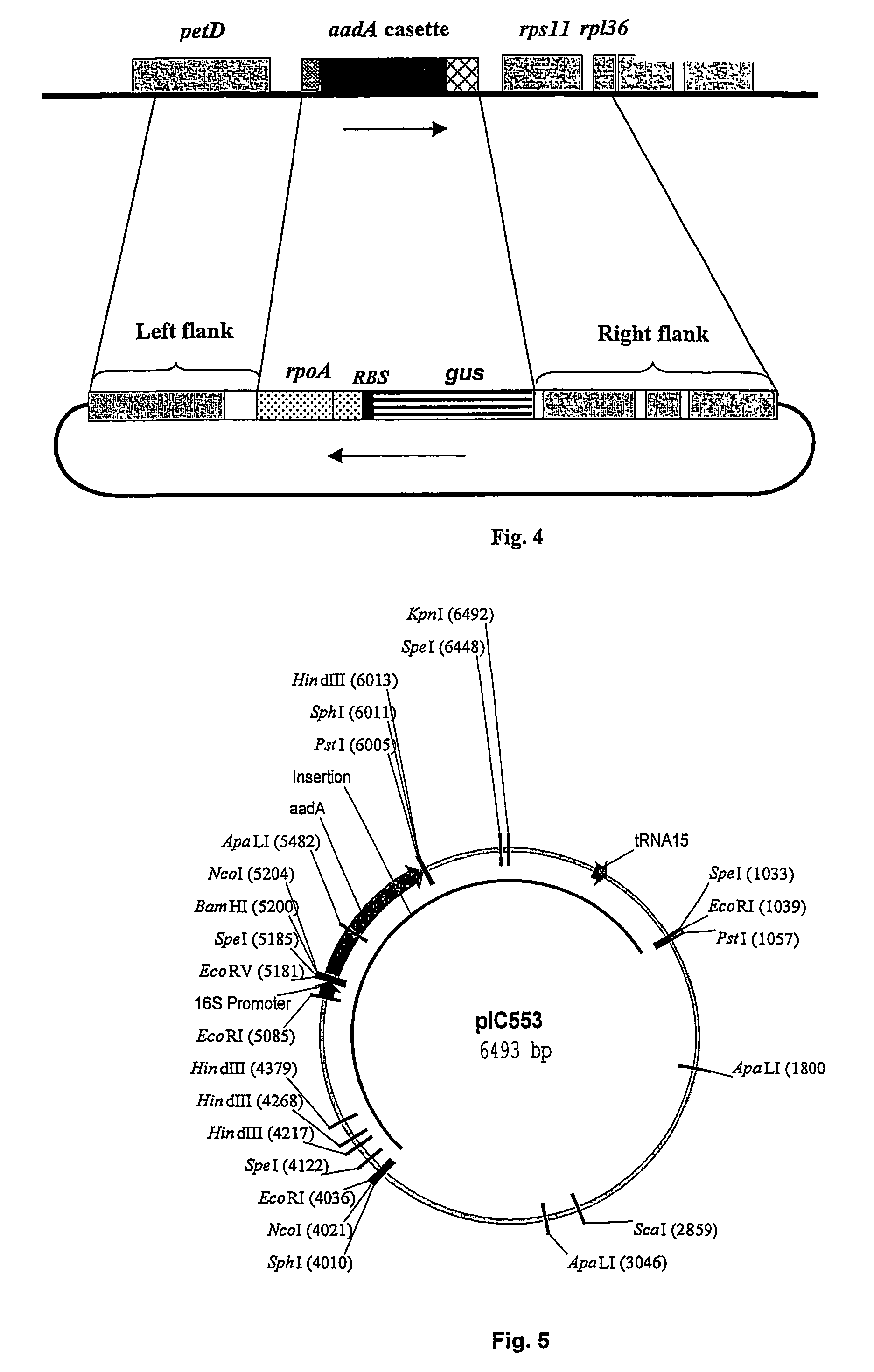Processes and vectors for plastid transformation of higher plants
a plastid and plant technology, applied in the field of plant molecular biology, can solve the problems of insufficient complexity of their genetic information, lack of selectable marker genes, and occurrence of marker genes in transgenic plants, and achieve the effect of simple yet highly versatil
- Summary
- Abstract
- Description
- Claims
- Application Information
AI Technical Summary
Benefits of technology
Problems solved by technology
Method used
Image
Examples
embodiment 1
he Selection of Plastid Transformants Based on the Inactivation and Restoration of the rpoA or rpoB Genes
[0060]For targeted disruption of rpoB gene function, the rpoB promoter and the start codon may for example be replaced with the aadA marker gene or another marker gene. Bombarded leaf tissue may be regenerated under temporary selection on spectinomycin-containing medium in case of the aadA marker. Transformants display antibiotic resistance and initially a green phenotype in light while still being heteroplastomic. These primary transformants contain a mixture of both wild-type and transformed chloroplast genomes. The green, heteroplastomic material is transferred to non-selective medium. Segregation leads to the occurrence of white, mixed, and green sectors. Material from white sectors may be subjected to several additional rounds of regeneration on non-selective medium in order to obtain homoplastomic mutant transformants.
[0061]In the second transformation, the homoplastomic Δr...
embodiment 2
he Selection of Plastid Transformants Based on the Inactivation and Restoration of the ycf3 Gene
[0062]Disruption of ycf3 gene may be achieved by replacing the 5′-regulatory element and the first exon of ycf3 by a marker gene like the aadA marker gene. The transformation vector may be introduced into tobacco plastids e.g. using the biolistic protocol or PEG-mediated transformation. The bombarded leaf tissue, in case of the biolistic protocol, is regenerated under selection on medium containing an inhibitor or antibiotic, spectinomycin in case of the aadA gene. Transformants display inhibitor resistance and initially a green phenotype under standard light conditions (3.5–4 W / m2) while still being heteroplastomic. These primary transformants normally contain a mixture of wild-type and transformed chloroplast genomes. After transfer to antibiotic-free medium, segregation leads to the occurrence of yellow-white and green sectors (under standard light conditions; see above). Material from...
embodiment 3
he Selection of Plastid Transformants Based on the Inactivation and Restoration of the petA Gene
[0063]For targeted disruption of the petA gene, the coding region may be replaced with a marker gene, e.g. the aadA marker gene. Bombarded leaf tissue, in the case of transformation by particle bombardment, may be regenerated under selection on antibiotic containing medium. Transformants display antibiotic resistance and initially a normal green phenotype in light while still being heteroplastomic. These primary transformants contain a mixture of wild-type and transformed chloroplast genomes. After transfer to antibiotic-free medium, segregation may lead to the occurrence of sectors displaying the hcf phenotype, which can be detected under UV illumination. Material from the mutant sectors may be subjected to several additional rounds of regeneration on non-selective medium in order to obtain homoplastomic mutant material.
[0064]In the second transformation, the homoplastomic ΔpetA plants m...
PUM
| Property | Measurement | Unit |
|---|---|---|
| osmolarity | aaaaa | aaaaa |
| pH | aaaaa | aaaaa |
| volume | aaaaa | aaaaa |
Abstract
Description
Claims
Application Information
 Login to View More
Login to View More - R&D
- Intellectual Property
- Life Sciences
- Materials
- Tech Scout
- Unparalleled Data Quality
- Higher Quality Content
- 60% Fewer Hallucinations
Browse by: Latest US Patents, China's latest patents, Technical Efficacy Thesaurus, Application Domain, Technology Topic, Popular Technical Reports.
© 2025 PatSnap. All rights reserved.Legal|Privacy policy|Modern Slavery Act Transparency Statement|Sitemap|About US| Contact US: help@patsnap.com



